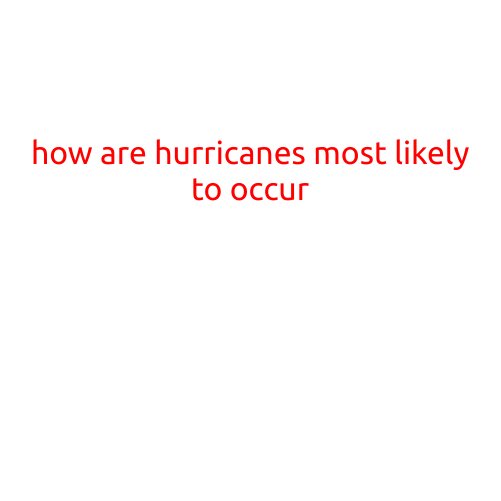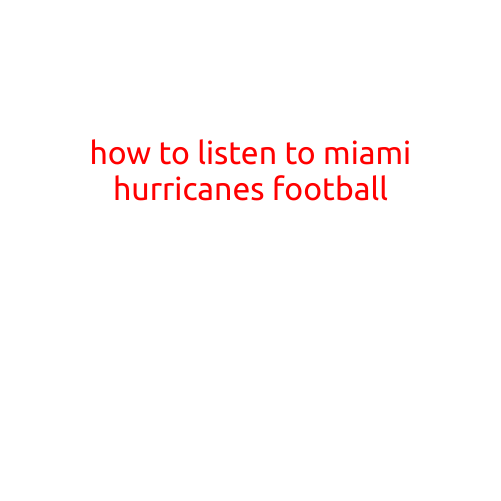
How Are Hurricanes Most Likely to Occur?
Hurricanes are powerful tropical cyclones that can bring devastating winds, rains, and storm surges to coastal areas and even inland communities. Understanding where and when hurricanes are most likely to occur is crucial for individuals, communities, and governments to prepare and mitigate the impact of these destructive storms.
Warm Ocean Waters
One of the primary factors that contribute to the formation of hurricanes is warm ocean water. Hurricanes need a heat source to energize their systems, and the warm waters of the Atlantic, Pacific, and Indian Oceans provide that energy. Sea surface temperatures of at least 26.5°C (80°F) are necessary for hurricanes to form and sustain themselves. The warmer the waters, the more powerful the hurricane can become.
Moisture and Low Pressure
Another essential component for hurricane formation is moisture. Hurricanes need a constant supply of moisture-laden air from the ocean to continue growing and strengthening. This moisture-filled air rises, cools, and condenses, forming clouds and releasing heat, which fuels the hurricane’s rotation. Low atmospheric pressure also plays a crucial role, as it allows the warm, moist air to rise and continue feeding the hurricane.
Tropical Disturbances
Tropical disturbances, also known as tropical waves, are areas of low pressure that form over warm ocean waters. These disturbances are the precursors to hurricanes and can strengthen into tropical depressions, tropical storms, and eventually hurricanes if conditions are favorable. Tropical disturbances are more likely to occur during the Atlantic hurricane season, which runs from June 1 to November 30.
Location and Climate
Hurricanes are most likely to occur in specific regions around the world, particularly in the Atlantic, Pacific, and Indian Oceans. The Caribbean and Gulf of Mexico are hotspot areas for hurricane formation, due to the warm waters and low atmospheric pressure. The majority of hurricanes that affect the United States occur in these regions.
Time of Year
Hurricanes are most likely to occur during specific times of the year, depending on the region. In the Atlantic, hurricanes are most common from mid-August to late October, with the peak month being September. In the Pacific, hurricanes are most common from May to November, with the peak month being September as well. In the Indian Ocean, hurricanes are most common from April to November.
Other Factors
While warm ocean waters, moisture, low pressure, tropical disturbances, location, and climate are the primary factors that contribute to hurricane formation, other factors can also play a role. These include:
- Wind shear: A change in wind direction and speed can disrupt the hurricane’s rotation, leading to weaker or disbanding storms.
- Dry air: Dry air can inhibit hurricane development and strengthen, as well as reduce the storm’s intensity.
- High-level clouds: High-level clouds can block the flow of energy from the ocean to the atmosphere, preventing hurricane formation.
- fronts: Weather fronts can disrupt the hurricane’s rotation, leading to its demise.
Conclusion
Hurricanes are complex weather phenomena that require a combination of specific conditions to form and intensify. Understanding where and when hurricanes are most likely to occur is crucial for preparedness and mitigation. By recognizing the factors that contribute to hurricane formation, individuals and communities can better prepare for the impact of these powerful storms, ultimately reducing the risk of damage and loss of life.





